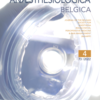Cricoid pressure in combination with the BURP maneuver versus cricoid pressure alone to improve the glottis view in pediatric patients; an interventional study
Laryngoscopy, Cricoid pressure, Sellick’s maneuver, BURP maneuver, Pediatric, Glottis view
Published online: Jun 28 2019
Abstract
Background : Glottis view is the main determinant of successful tracheal intubation during direct laryngoscopy. When difficulties arise, external laryngeal manipulation is usually the first and simplest technique to facilitate glottis view at first intubation attempt.
Aim : This study was designed to evidence the efficacy of cricoid pressure in combination with the BURP maneuver as compared to cricoid pressure alone to improve glottis view during laryngoscopy for tracheal intubation in pediatric patients.
Methods : This trial was conducted on pediatric patients, candidate for elective surgery under general anesthesia. After induction, direct laryngoscopy was performed with a Macintosh blade by an experienced anesthesiologist, and assigned a score based on a Modified Cormack- Lehane classification (control view). Thereafter, on the same patients, cricoid pressure was applied by an assistant and glottis view was again scored. Finally, the BURP maneuver in combination with cricoid pressure was performed, and a score of glottis view was again obtained. Data were then compared within group, between the different types of manoeuvers (none, cricoid pressure alone, and BURP with cricoid pressure).
Results : In total, 150 cases with a mean age of 4.4 ± 1.6 years were enrolled, of whom 103 cases (68.7%) were males. Cricoid pressure + BURP maneuver during laryngoscopy improved the glottis view in 32% of patients as compared with the control view (P=0.001). Cricoid pressure alone worsened the view in 60% of patients as compared to the control view (P=0.001).
Conclusion : Cricoid pressure in combination with the BURP maneuver improves glottis view, while cricoid pressure alone worsens it in pediatric patients under general anesthesia.
